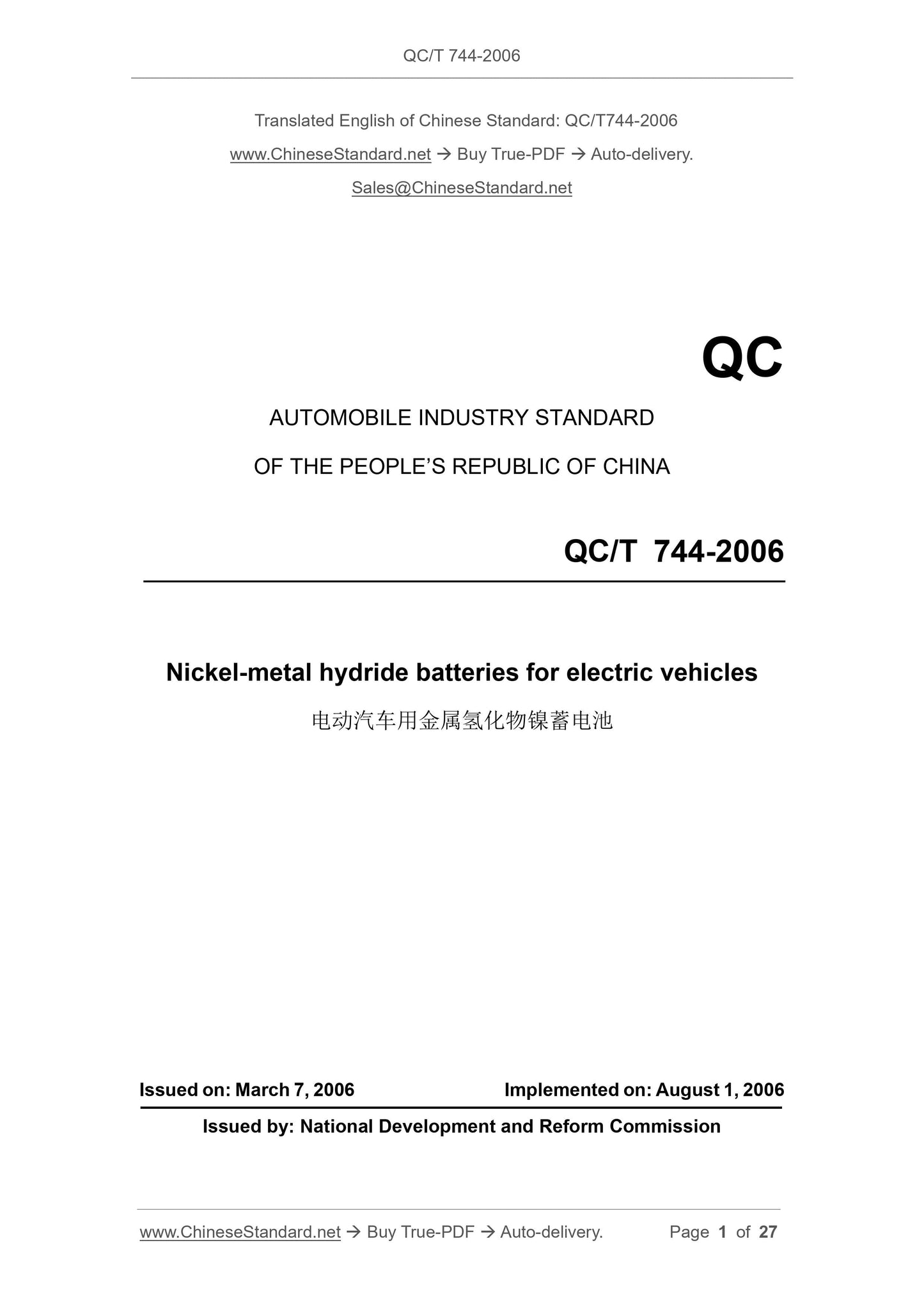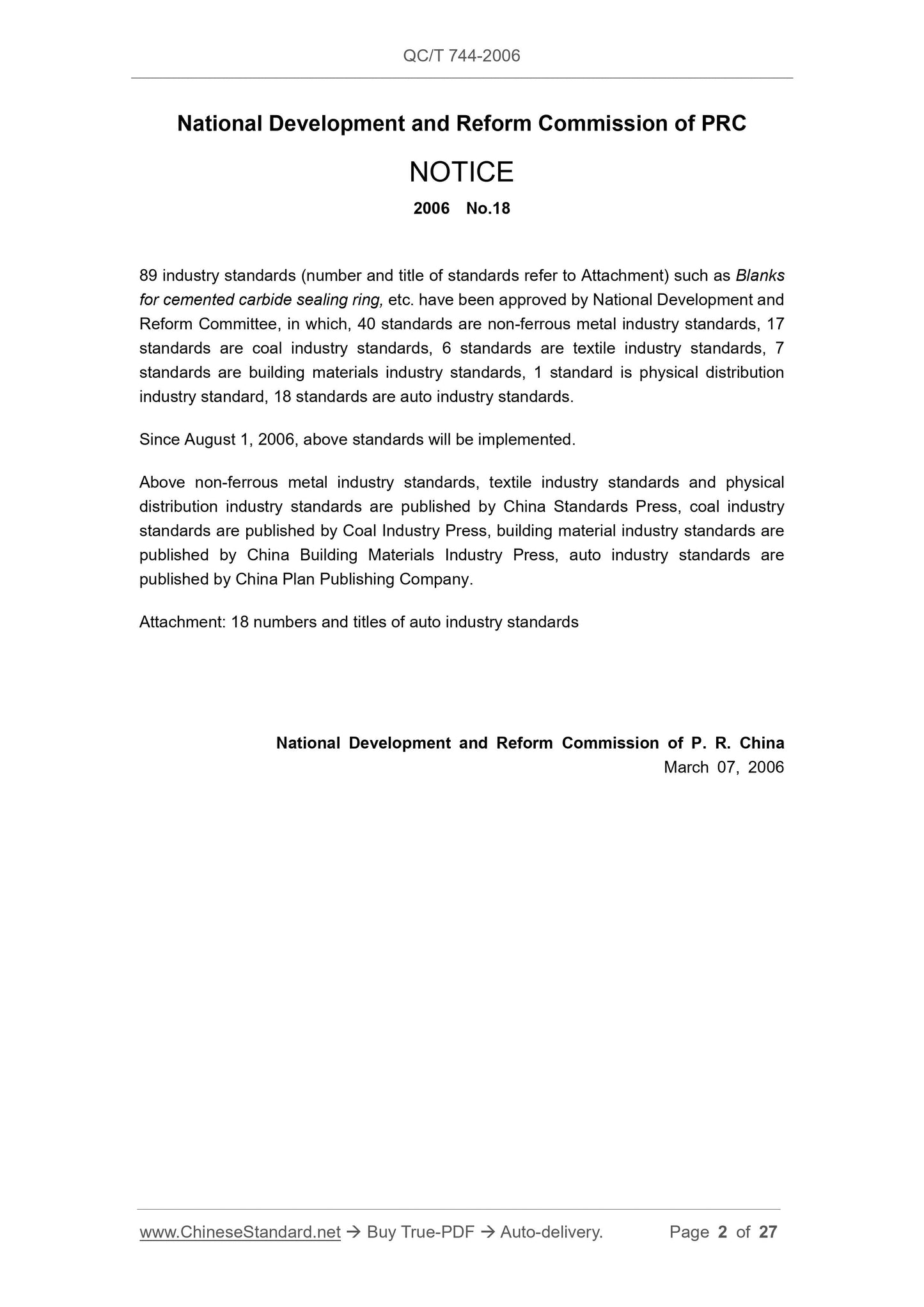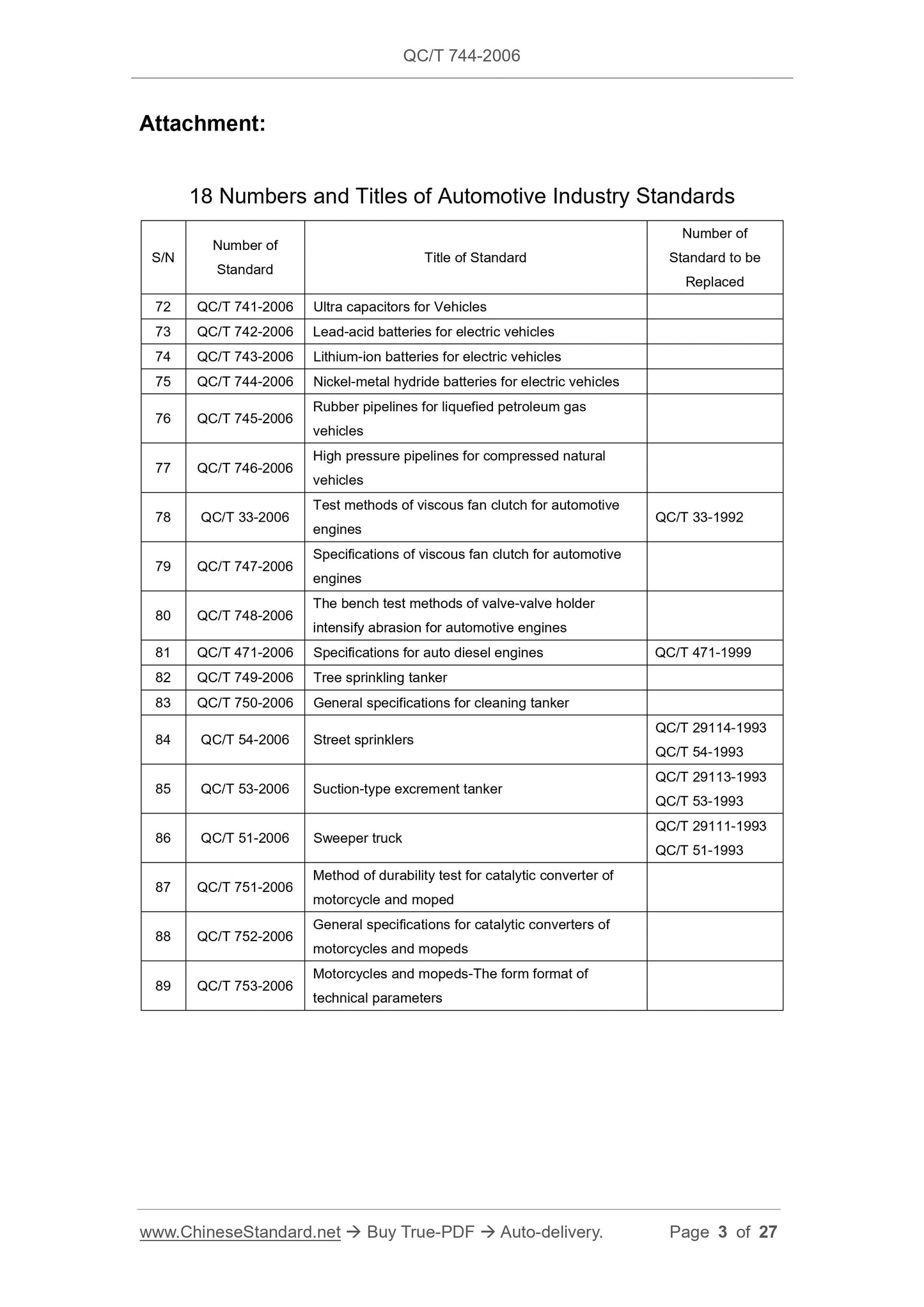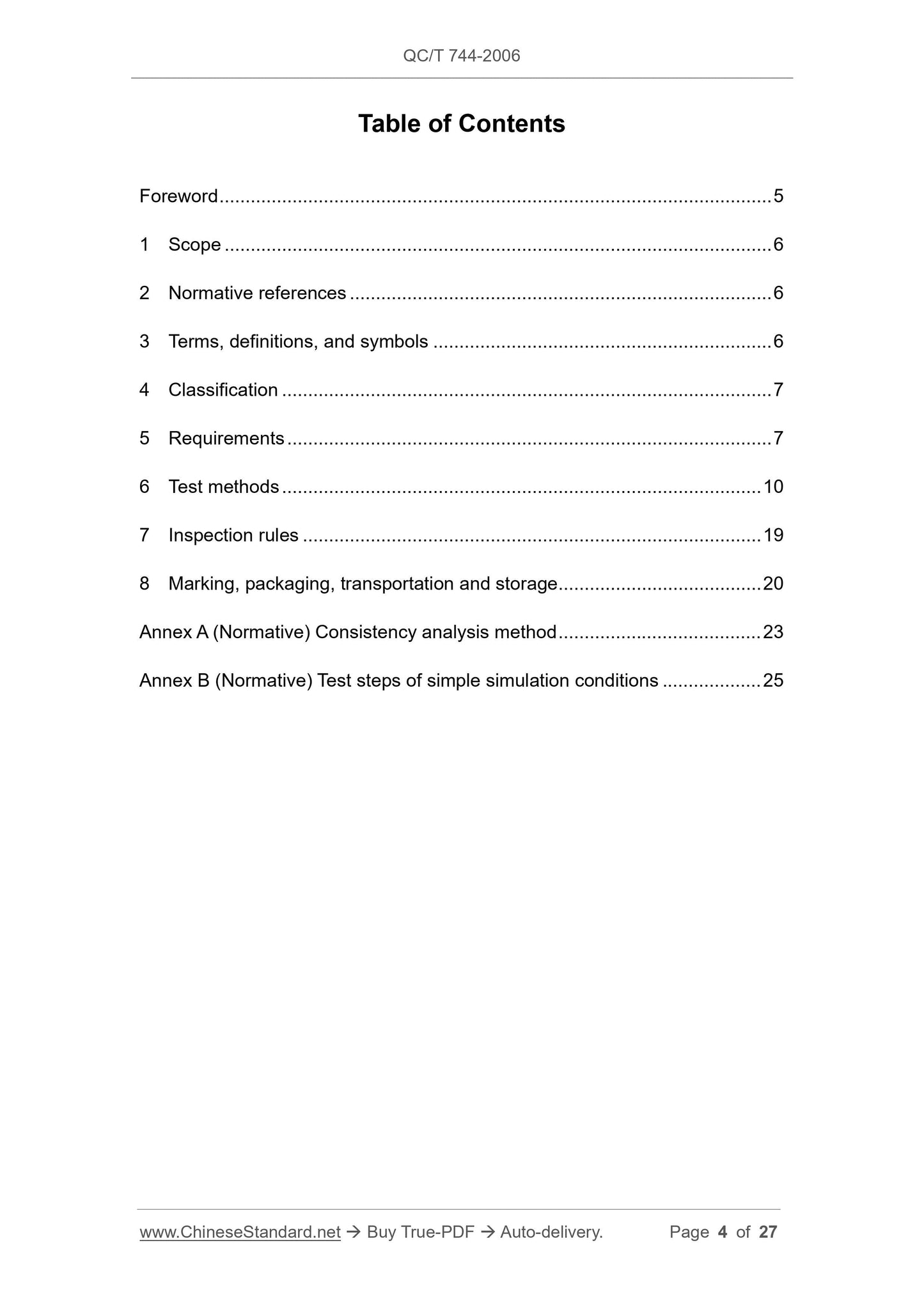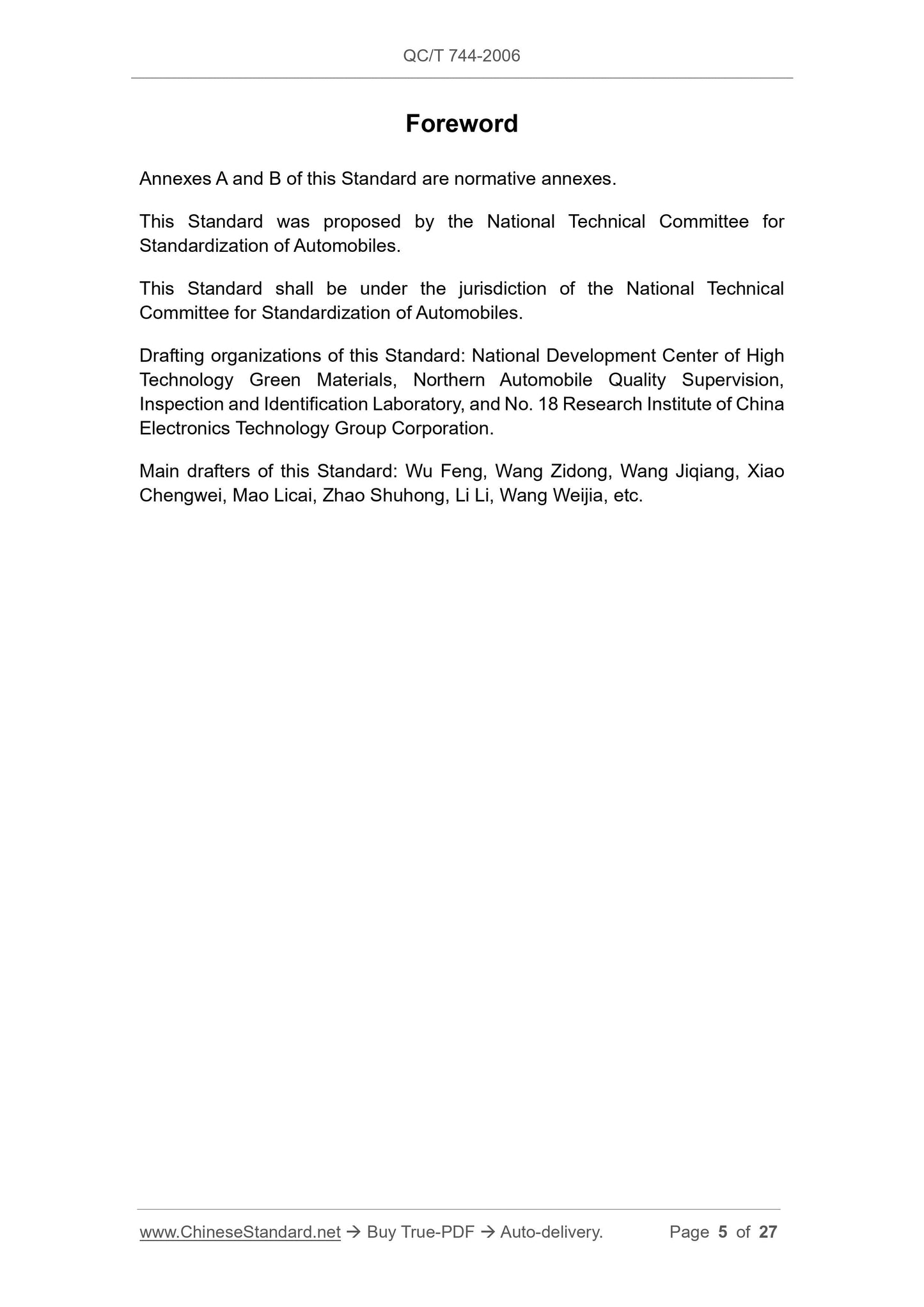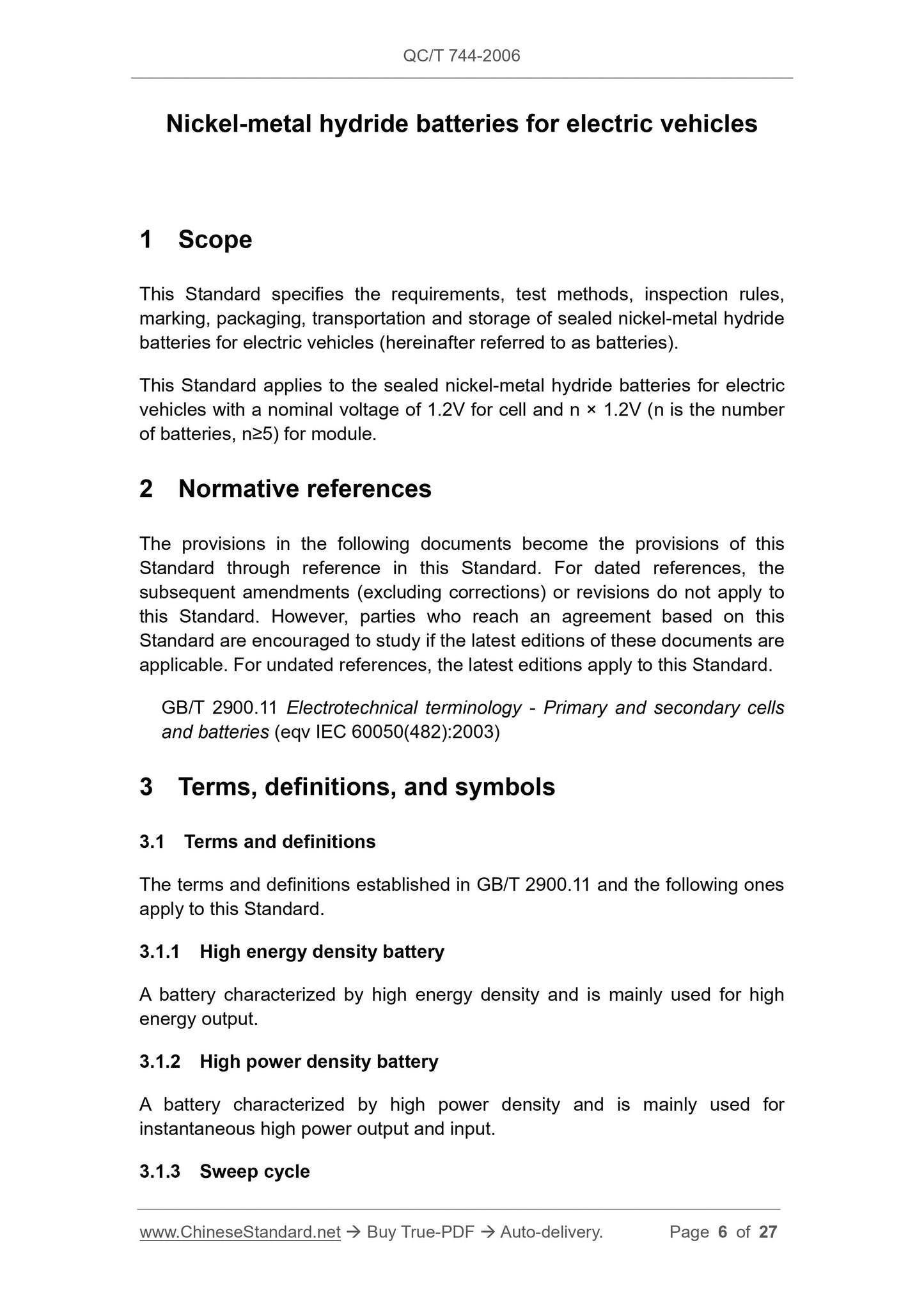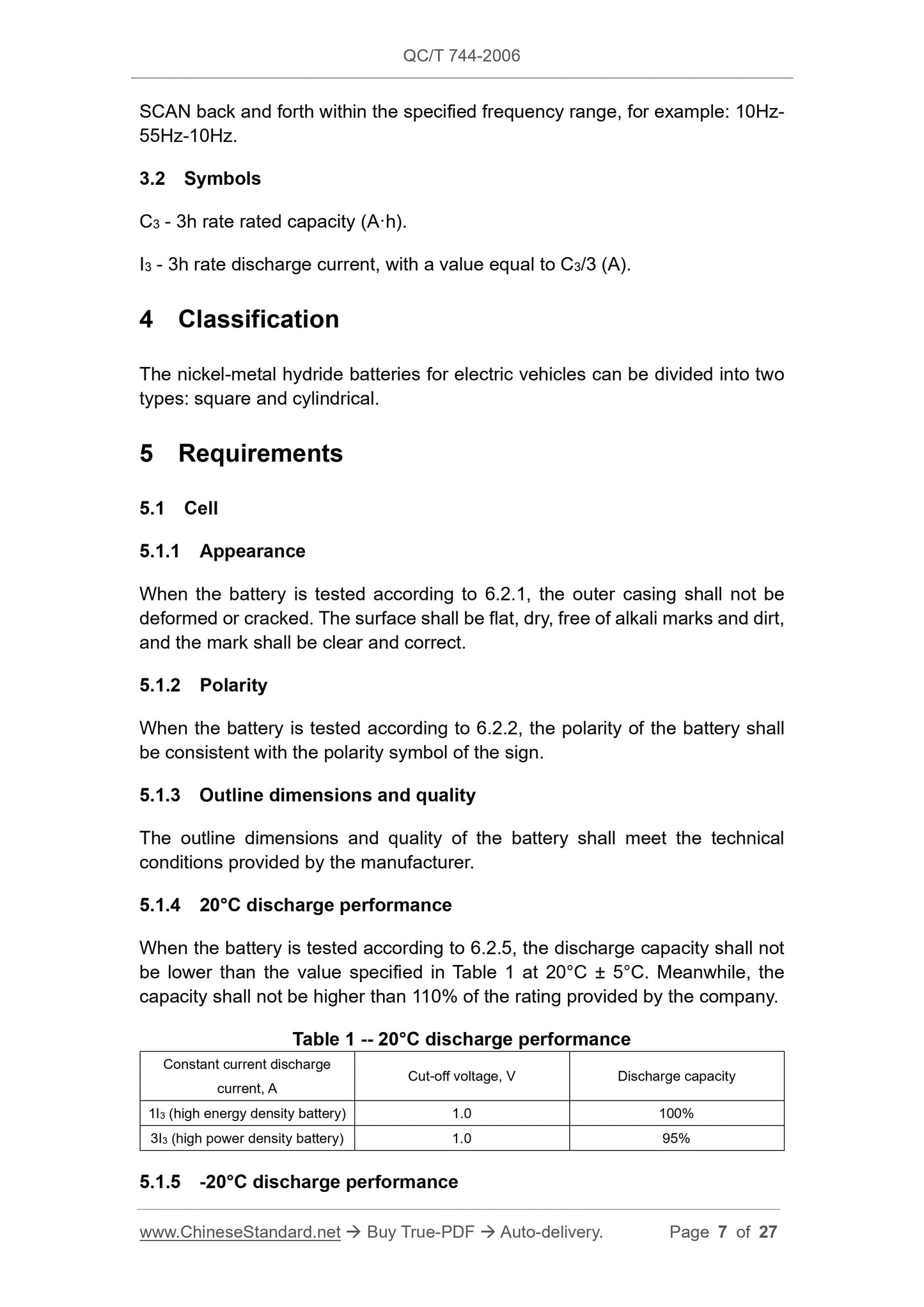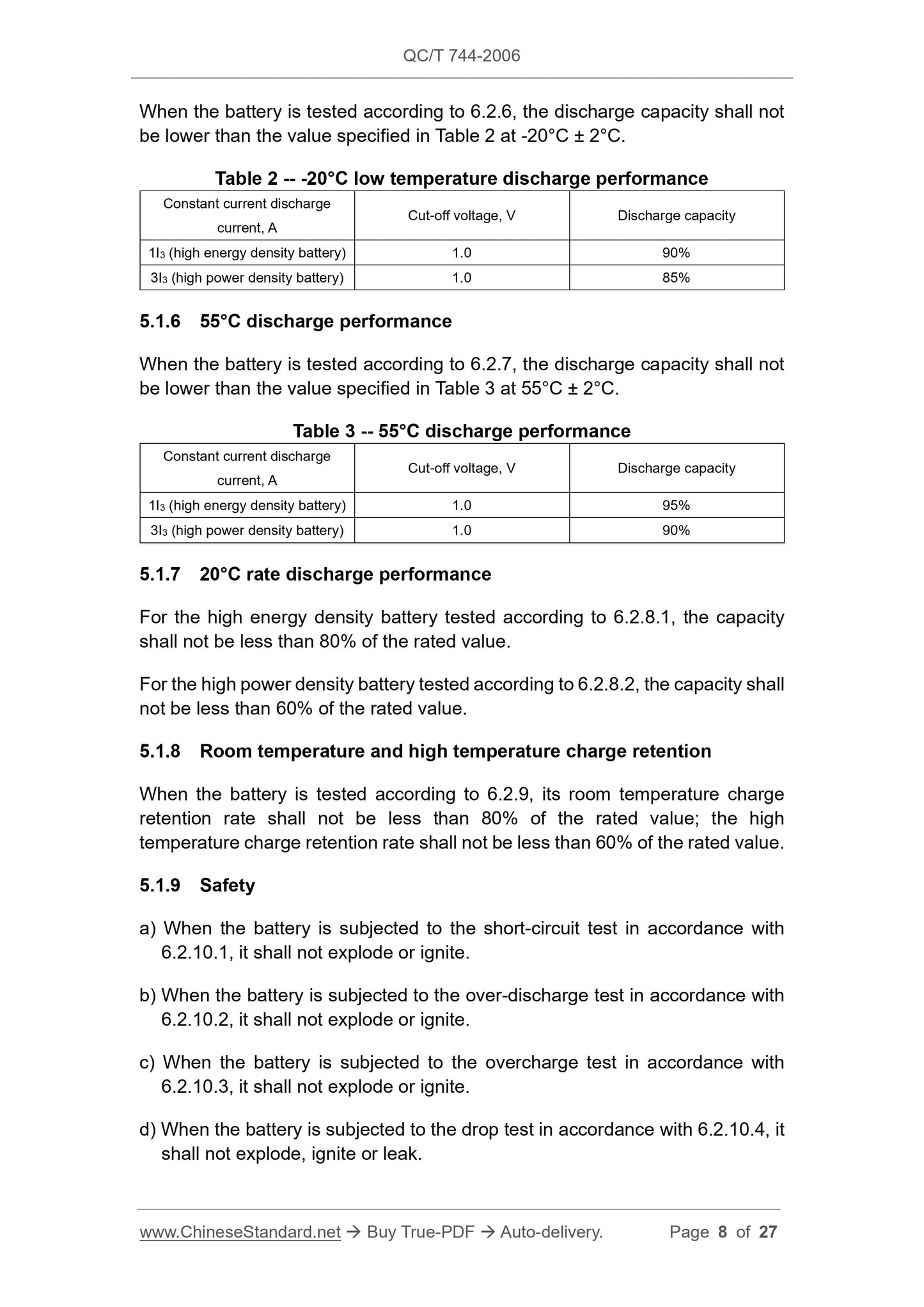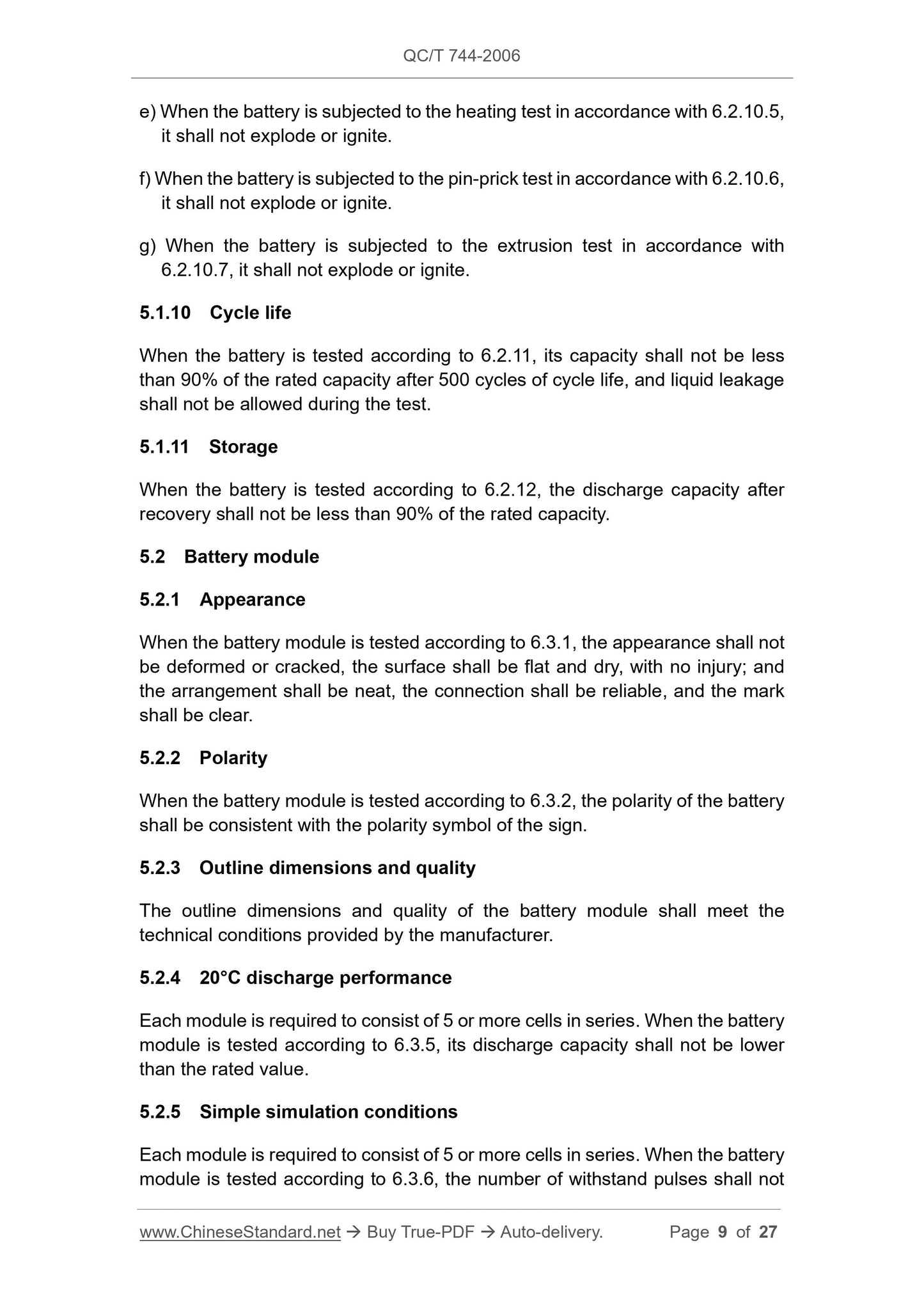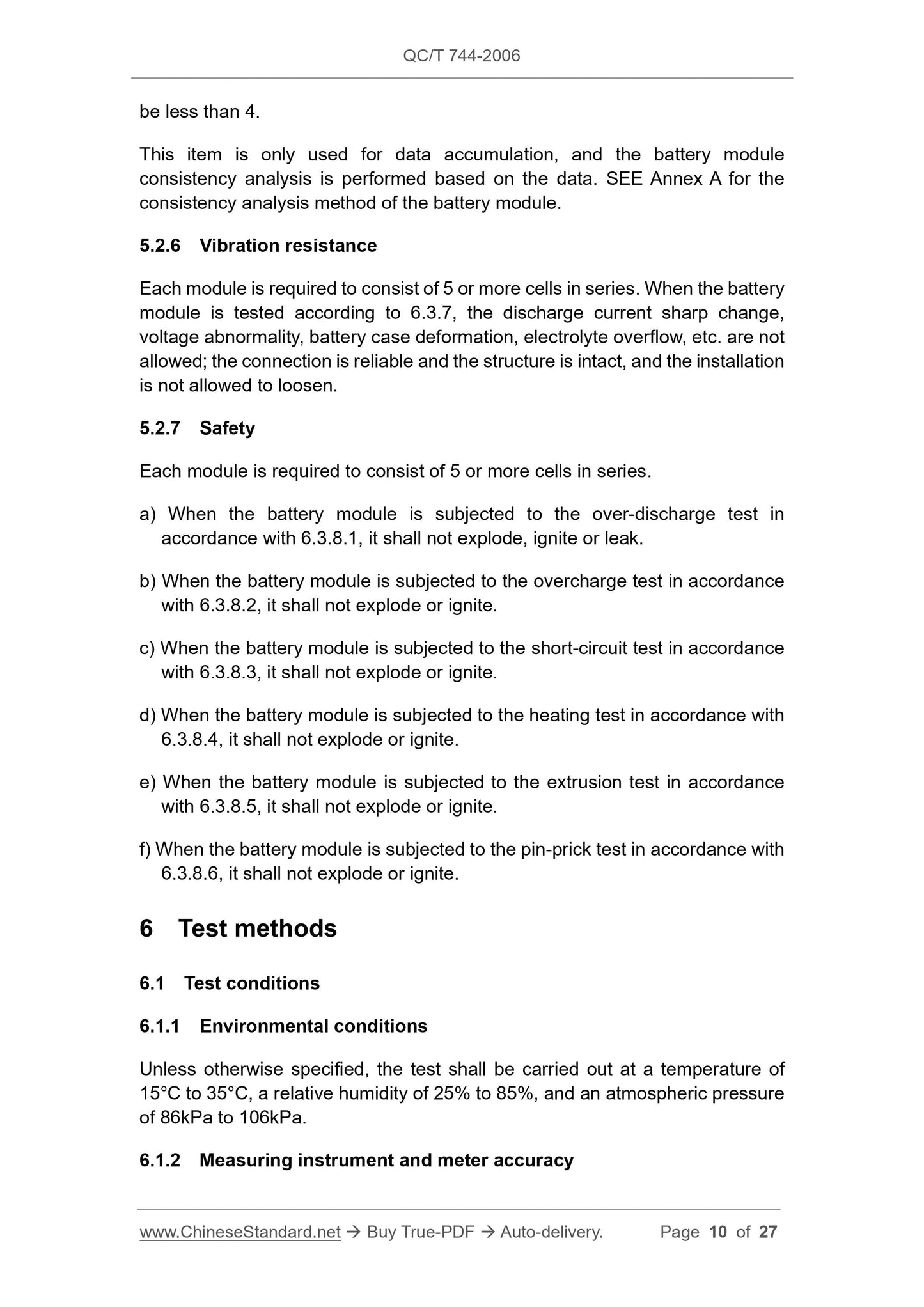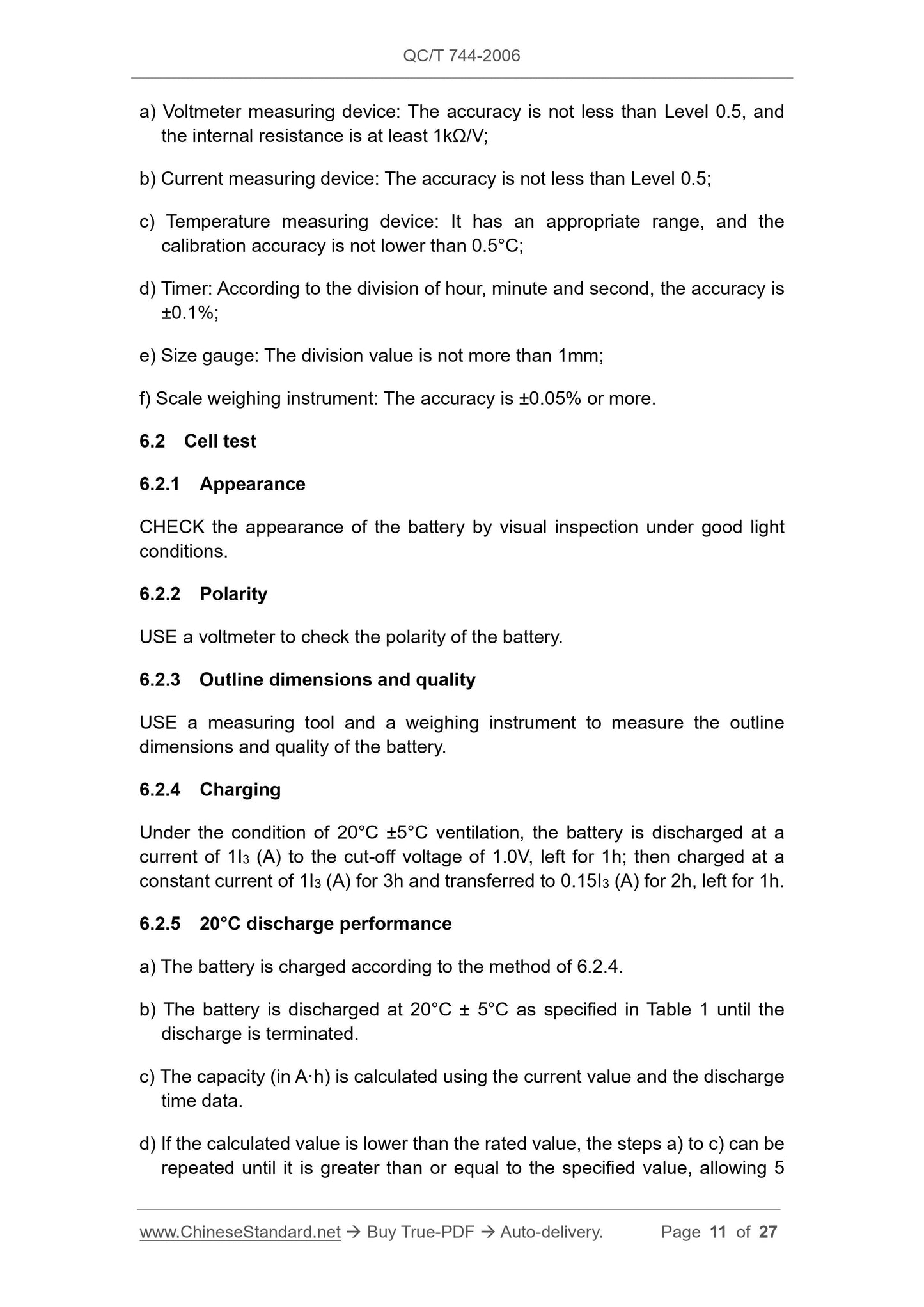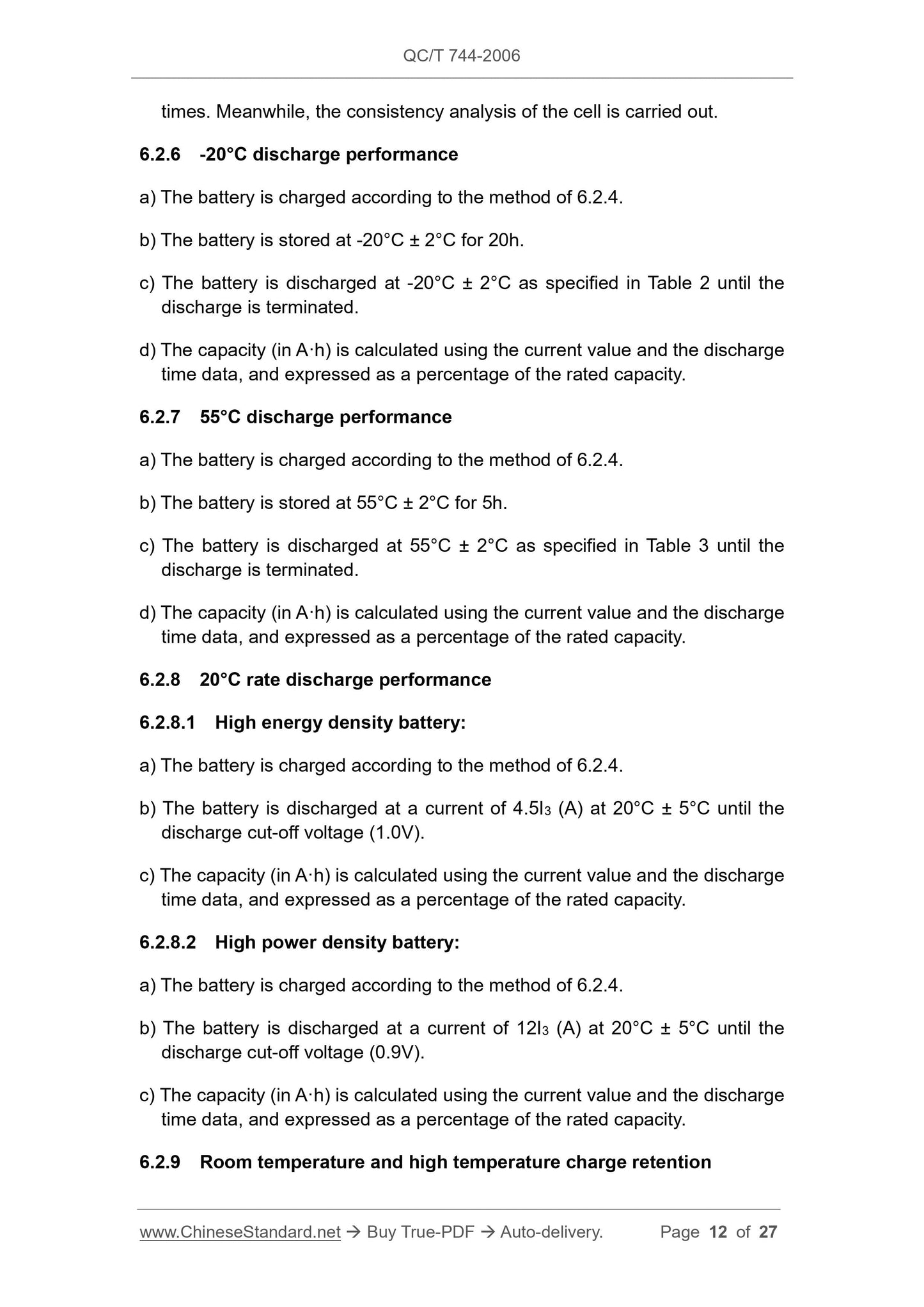1
/
of
12
www.ChineseStandard.us -- Field Test Asia Pte. Ltd.
QC/T 744-2006 English PDF (QC/T744-2006)
QC/T 744-2006 English PDF (QC/T744-2006)
Regular price
$150.00
Regular price
Sale price
$150.00
Unit price
/
per
Shipping calculated at checkout.
Couldn't load pickup availability
QC/T 744-2006: Nickel-metal hydride batteries for electric vehicles
Delivery: 9 seconds. Download (and Email) true-PDF + Invoice.Get Quotation: Click QC/T 744-2006 (Self-service in 1-minute)
Newer / historical versions: QC/T 744-2006
Preview True-PDF
Scope
This Standard specifies the requirements, test methods, inspection rules,marking, packaging, transportation and storage of sealed nickel-metal hydride
batteries for electric vehicles (hereinafter referred to as batteries).
This Standard applies to the sealed nickel-metal hydride batteries for electric
vehicles with a nominal voltage of 1.2V for cell and n × 1.2V (n is the number
of batteries, n≥5) for module.
Basic Data
| Standard ID | QC/T 744-2006 (QC/T744-2006) |
| Description (Translated English) | Nickel-metal hydride batteries for electric vehicles |
| Sector / Industry | Automobile and Vehicle Industry Standard (Recommended) |
| Classification of Chinese Standard | K84;T47 |
| Classification of International Standard | 29.220.20 |
| Word Count Estimation | 21,262 |
| Date of Issue | 2006-03-07 |
| Date of Implementation | 2006-08-01 |
| Quoted Standard | GB/T 2900.11 |
| Regulation (derived from) | NDRC Notice No. 18 of 2006 |
| Issuing agency(ies) | Ministry of Industry and Information Technology |
| Summary | This standard specifies the use of electric vehicles sealed nickel- metal hydride batteries (hereinafter referred to as the battery) requirements, test methods, inspection rules, marking, packaging, transportation and storage. This standard applies to electric vehicles with nominal voltage of 1. 2V and a single module n �� 1. 2V (n is the number of batteries, n �� 5) sealed nickel metal hydride batteries. |
Share
